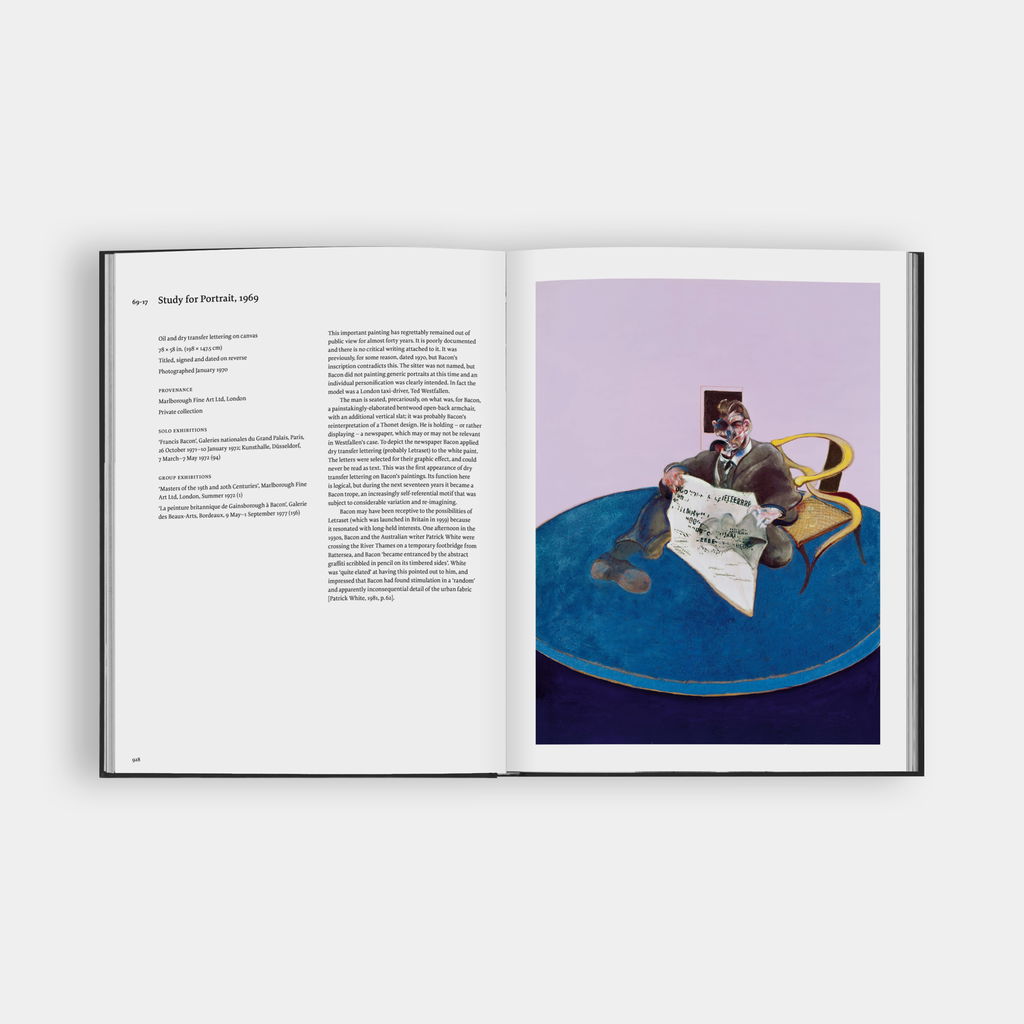Portrait of George Dyer Riding a Bicycle, produced in 1996 and turned into a series of limited edition prints by HENI.
Portrait of George Dyer Riding a Bicycle is part of a series of ten paintings in which Francis Bacon explored his despair at life’s pointless cycle of birth, copulation, and death. These works simultaneously also convey his frustrations with the deficiencies he saw in his partner.
In 1963, Francis Bacon first met George Dyer, the East Londoner who would become his lover and one of his favourite subjects. In the following decades Bacon painted Dyer's likeness with a fervour that bordered on obsession, from small busts to full body, monumental triptychs. Among the most unique of these paintings is Portrait of George Dyer Riding a Bicycle, produced in 1966 and translated in 2015 into the present series of editioned prints.
In this portrait, Dyer’s distorted features seem to dissolve within the flat background, rendered in a grim colour palette of dull shades of brown. Bacon represented Dyer as a broad shadow, which seems to assume the formless shape of a ghostlike mass of flesh. Bacon’s own features emerge from his silhouetted head, almost combining two figurations in one.




Portrait of George Dyer Riding a Bicycle (Small) (Q1B), Francis Bacon, 2015
The circular form and motion of the bicycle wheels, significantly doubled, symbolise the endless circularity, transience, and futility that Bacon associated with life. These concepts are echoed in the rail structure encasing Dyer, a visual device used to isolate and alienate figures. Despite Bacon’s attempt to fuse himself with the man he loved, he could never get close enough.
Portrait of George Dyer Riding a Bicycle (Small)
Edition: Q1B
Medium: Giclée print mounted on aluminium
Details: Unsigned
Dimensions: 110 x 82 cm
Edition size: 500
Date: 2015
Related Blog Posts

HENI Publishing · 28 Jun 2016
Francis Bacon: Catalogue Raisonné
This landmark publishing event presents the entire oeuvre of Bacon’s paintings for the first time in a deluxe five-volume boxed set.

HENI Art Club · 06 Apr 2022
The Francis Bacon Catalogue Raisonné is now available on HENI Art Club
HENI Art Club now holds exclusive access to the Francis Bacon: Catalogue Raisonné, presenting the entire collection in digital form as a free ebook.

HENI Art Club · 08 Feb 2022
Bacon in Moscow – James Birch
Join HENI Art Club for an exclusive conversation with curator James Birch about his memoir 'Bacon in Moscow' and his ground-breaking 1988 exhibition.